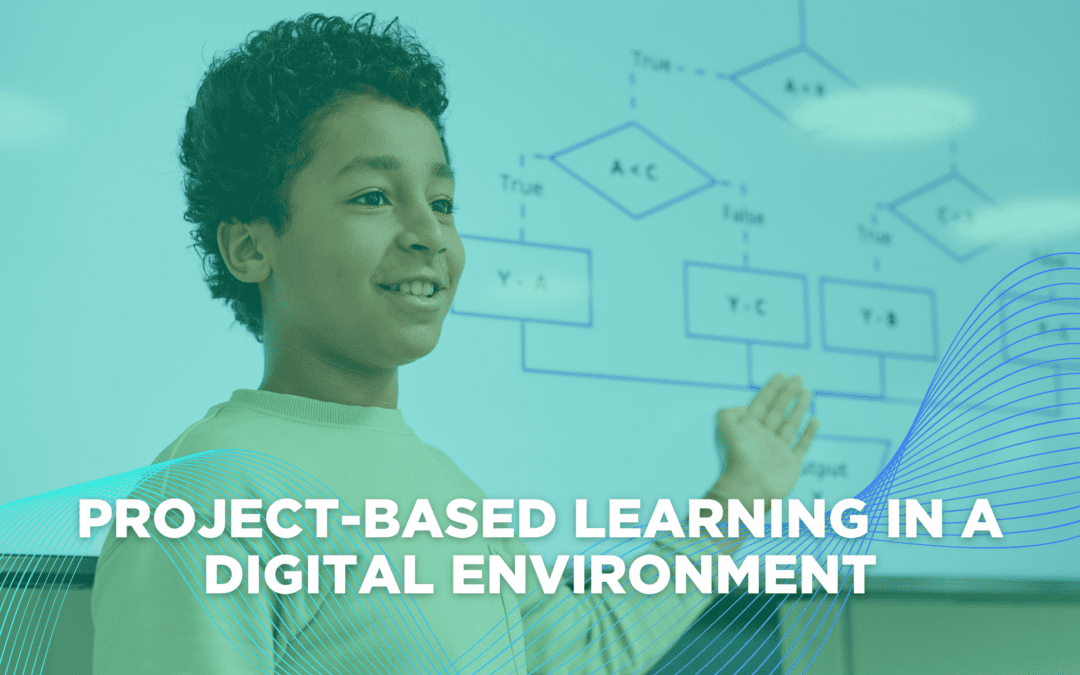Digital tools and platforms are rapidly transforming how students learn and interact with their teachers and other students. Among the most impactful approaches in our digital age is project-based learning (PBL). This methodology empowers students to gain knowledge and skills by actively exploring real-world challenges. For the Northwest Council for Computer Education (NCCE), which champions innovative teaching practices, PBL aligns with our mission to inspire student success through the effective implementation of technology and collaboration in the classroom.
The Core of Project-Based Learning
PBL is a shift from traditional, lecture-based teaching to an interactive, student-centered approach. Whether working independently or collaboratively, students engage in various meaningful projects designed to require critical thinking, creativity, problem-solving, and — for group projects — teamwork.
For instance, instead of memorizing historical dates for a test, an instructor might challenge a group of students to create a dynamic multimedia timeline that explores how global events interconnect and influence others. Or, instead of studying environmental science through textbooks, students might use simulation software to model the impact of a volcanic eruption on a given ecosystem. These projects make learning more engaging and equip students with real-world technical and creative skills they can carry into their future careers.
Independent Projects in Digital Spaces
Independent projects thrive in digital environments where students have access to a wide variety of technological tools and resources. Platforms like Google Workspace, Canva, and Trello enable students to plan, execute, and showcase their work with a level of professionalism once reserved for industry experts.
One benefit of digital PBL for independent learners is the capability to personalize their learning. A student passionate about graphic design can use software like Adobe Creative Suite to develop a branding project, while another interested in coding can build their own app with programming tools like Scratch or Python.
Moreover, digital tools often provide built-in feedback mechanisms. For instance, platforms like Duolingo or Khan Academy analyze student progress, offering insights into areas for improvement. This immediate feedback loop fosters self-directed learning, helping students become autonomous problem-solvers.
Collaborative Projects: Bridging Distances
Group projects, another cornerstone of PBL, are particularly powerful in digital environments. With tools like Microsoft Teams, Slack, and Zoom, students can collaborate seamlessly, regardless of physical location. Remote students and in-person learners can work together on projects previously restricted by geography.
Consider a high school class where students collaborate on a podcast series addressing local social issues. One team might handle research, another could focus on scriptwriting, and a third might edit audio files — all while communicating and collaborating via shared digital platforms. This experience mirrors the dynamics of modern workplaces, where virtual collaboration is the norm.
Digital environments also enhance equity in group projects. By using shared documents and task management tools, educators can monitor participation levels, ensuring every student has an opportunity to contribute. This transparency helps balance workloads and fosters accountability within teams.
Challenges and Solutions in Digital PBL
While the benefits of digital PBL are clear, it is not without challenges. Access to technological tools, suitable software, and a reliable internet connection is a significant hurdle for some students. Educators must prioritize equitable access by leveraging low-bandwidth tools and providing offline options when necessary.
Additionally, some students may struggle with the self-discipline required for independent digital projects. To address this, educators can set clear milestones and provide structured guidance through learning management systems like Canvas or Moodle. Regular check-ins via video conferencing or email ensure students stay on track and that some students do not carry more of the load for a group project than others.
Fostering collaboration for group projects can be tricky in remote settings where face-to-face communication is limited. However, encouraging students to use video tools for team-building exercises and assigning clear roles within projects can mitigate these challenges.
The Role of NCCE in Digital PBL
As a leader in educational technology, NCCE is uniquely positioned to support educators implementing PBL in digital environments. Through professional development workshops, technology integration training, and resources tailored for 21st-century classrooms, NCCE empowers educators to create impactful learning experiences.
NCCE helps bridge the gap between technology and pedagogy. Our initiatives ensure that both students and teachers are prepared to thrive in a digital-first world, making PBL not just an instructional method but a pathway to success. Project-based learning can prepare students for a rapidly evolving world while fostering creativity, collaboration, and critical thinking.If you’re an educator looking to integrate PBL into your teaching, NCCE can help. Contact NCCE today to explore our upcoming events and workshops or join our dynamic community of EdTech professionals sharing best practices and effective tools for digital learning.

